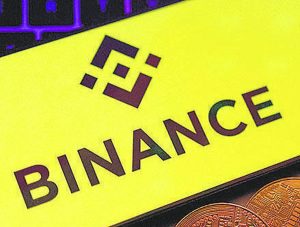A New Pathway for Digital Asset Distribution: Token Sale Framework Emerges on Coinbase

Coinbase has introduced a structured token-sale mechanism designed to support emerging blockchain projects in bringing their assets to market in a more transparent and compliant manner. The initiative reflects growing demand for regulated distribution channels as Web3 innovation accelerates and investor interest broadens beyond established cryptocurrencies. By offering a curated launch environment, Coinbase aims to strengthen market integrity, improve user protections, and help developers access liquidity and exposure without compromising regulatory obligations. The move underscores the exchange’s focus on building institutional-grade infrastructure for token issuance, while signaling a broader industry shift toward formalizing early-stage digital-asset fundraising.
A New Model for Token Distribution
Coinbase’s token-sale platform introduces a structured process intended to support responsible access to new digital assets. Rather than relying on fragmented launchpads or unregulated venues, issuers can now raise capital through a recognized exchange environment with standardized listing criteria and investor safeguards.
The platform is positioned to blend accessibility with discipline, giving retail and institutional participants a clear path to participate in emerging projects while mitigating risks often associated with early-stage token markets.
Institutional-Grade Controls and Compliance
A key differentiator of the Coinbase approach is its alignment with regulatory best practices. The framework emphasizes compliance screening, transparent disclosures, and adherence to investor-protection requirements.
By embedding these safeguards into the token-launch experience, Coinbase aims to elevate industry standards and present global regulators with a model for responsible digital-asset issuance. This approach may pave the way for more institutional involvement as traditional finance explores blockchain-based capital formation.
Developer Advantages: Credibility and Liquidity
For project teams, the token-sale structure offers access to an established user base, trusted brand perception, and liquidity pathways from day one. Launching on a name-recognizable platform provides a credibility advantage, reducing friction around user acquisition and helping startups focus on utility, network growth, and product development rather than fragmented exchange strategies.
This environment may also help founders avoid predatory fundraising models and volatile, speculative launch channels that often distort price discovery.
Investor Benefits: Transparency and Access
Investors gain from a more curated, research-oriented participation model. By setting clear eligibility requirements and risk disclosures, the platform seeks to prevent misinformed participation and reduce exposure to outright scams — a persistent issue in decentralized token issuance.
At the same time, the token-sale mechanism broadens access to early-stage digital assets that were historically limited to private investors, potentially democratizing innovation participation while maintaining integrity.
A Step Toward Maturing Token Markets
This initiative aligns with an ongoing evolution in crypto fundraising, moving from informal ICO structures toward regulated, exchange-facilitated offerings. As global jurisdictions sharpen digital-asset frameworks, compliant launch programs are poised to become central to blockchain fundraising ecosystems.
If successful, Coinbase’s token-sale structure could inspire similar institutional programs and accelerate mainstream capital flow into on-chain innovation — provided transparency, compliance, and investor education remain core priorities.
Conclusion
Coinbase’s token-sale launch initiative represents a significant turning point in the digital-asset funding landscape. By pairing regulatory rigor with user accessibility, the exchange is attempting to shape a secure and credible pathway for token distribution.
While adoption and regulatory reaction will evolve, this structured approach marks a move toward a more mature digital-asset economy — one where responsible fundraising, investor trust, and institutional-grade infrastructure play defining roles in the next wave of blockchain growth.




